

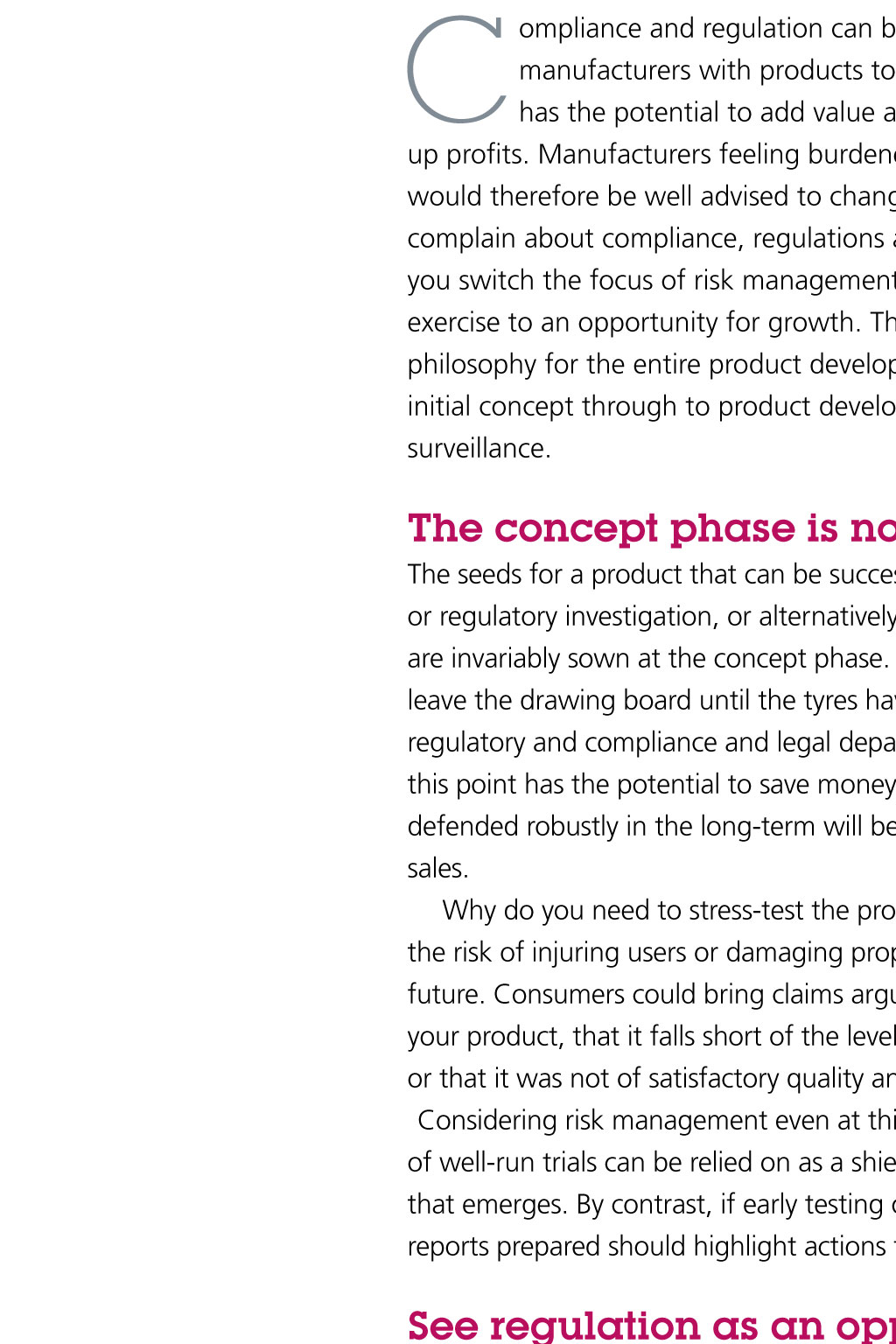
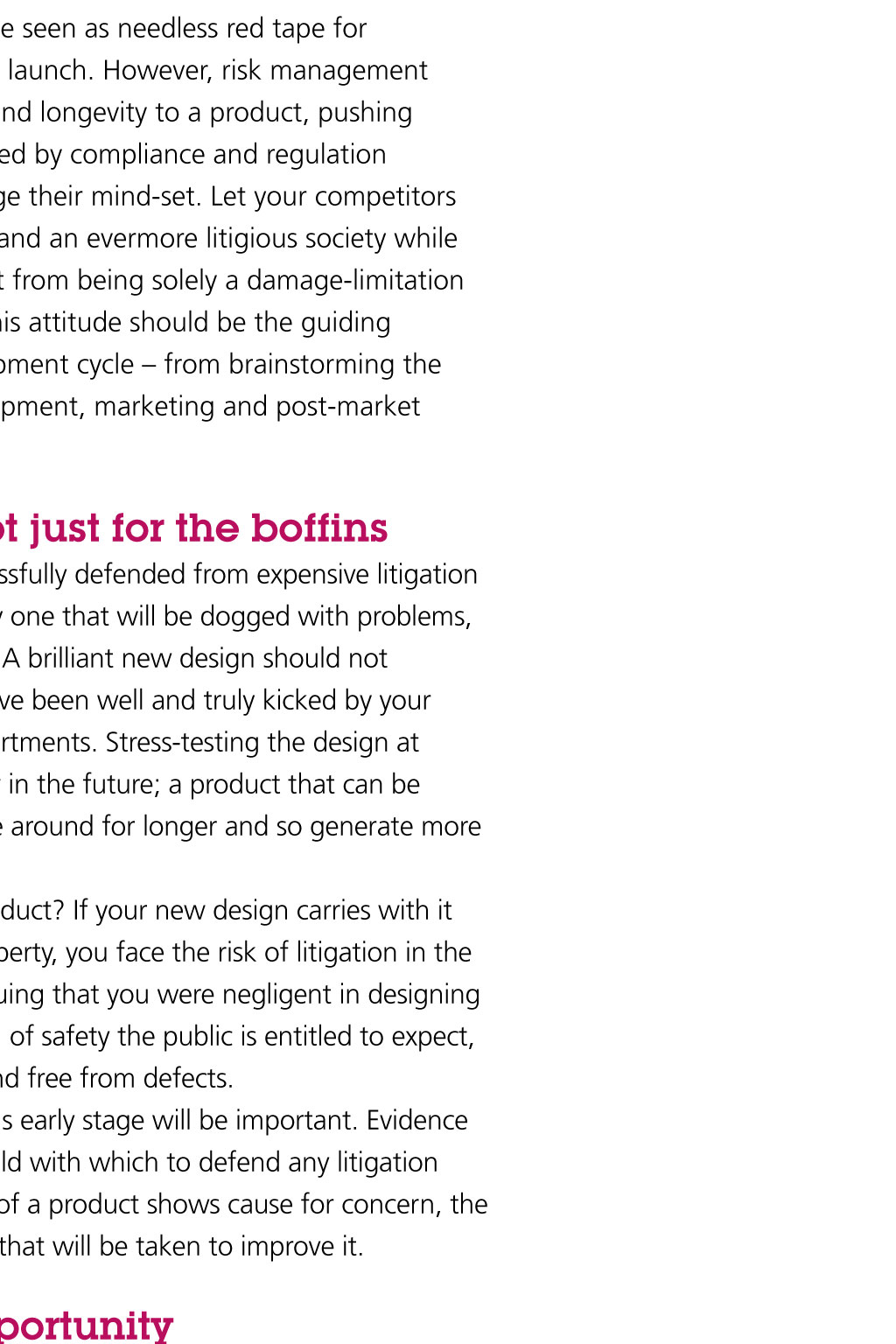
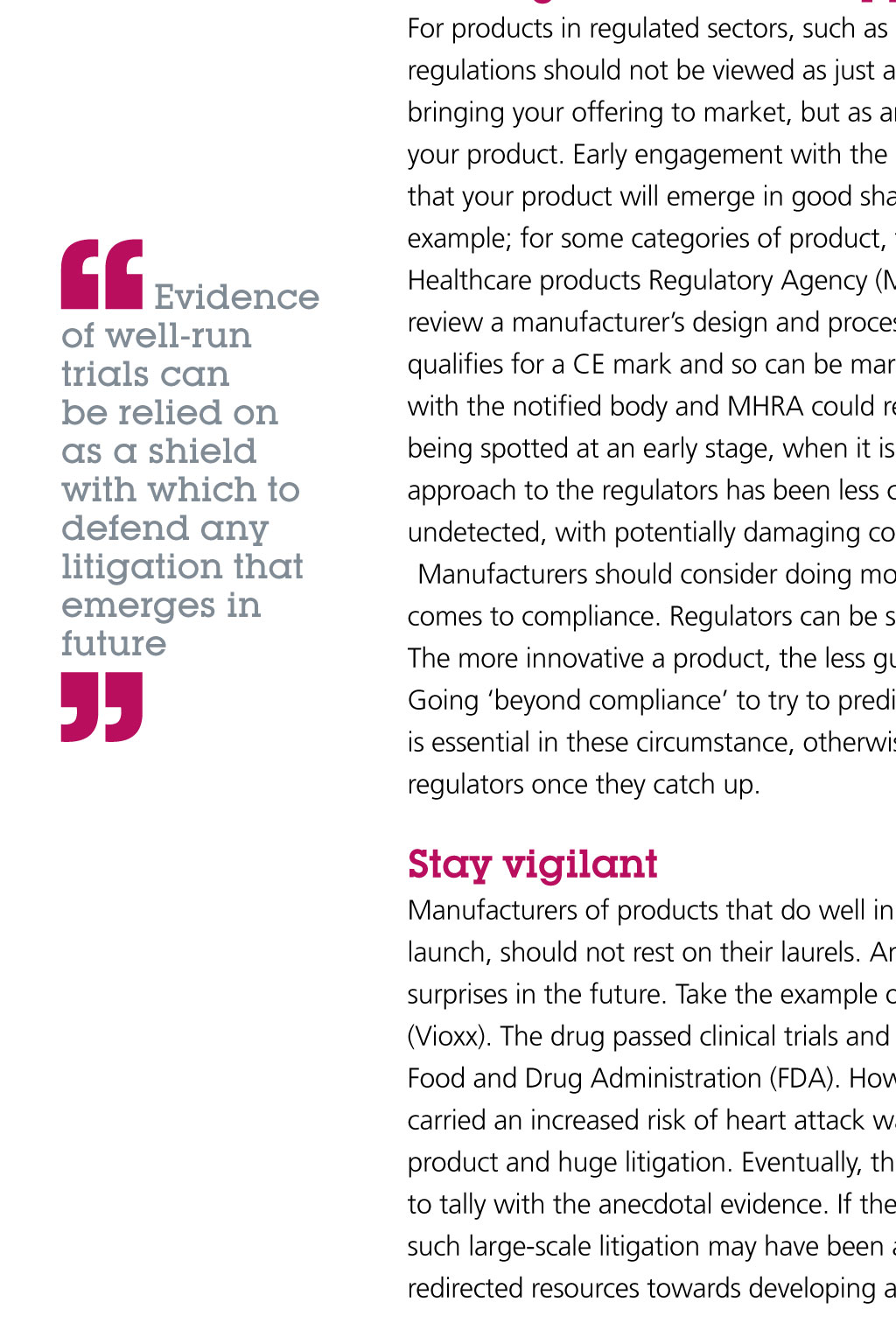
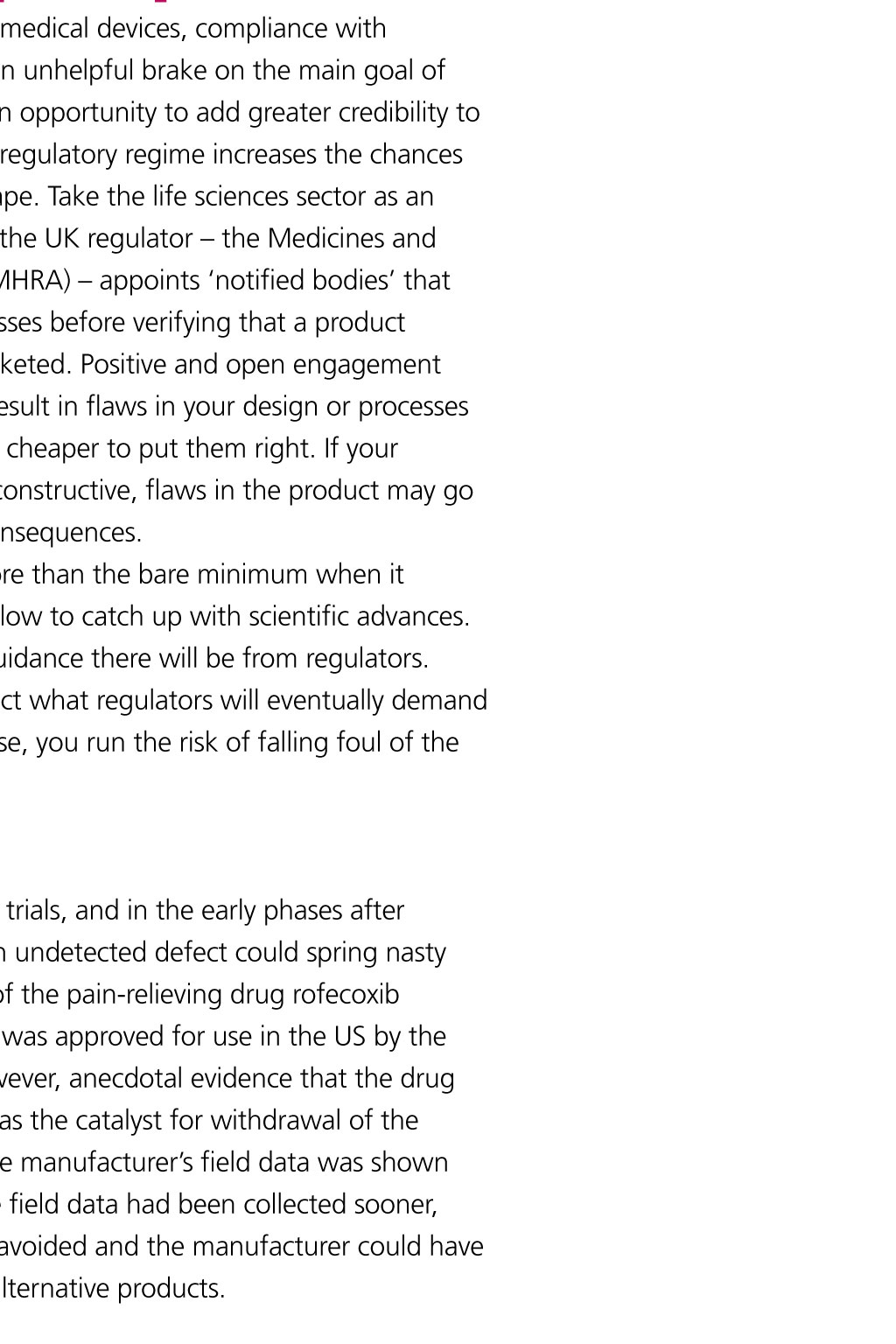
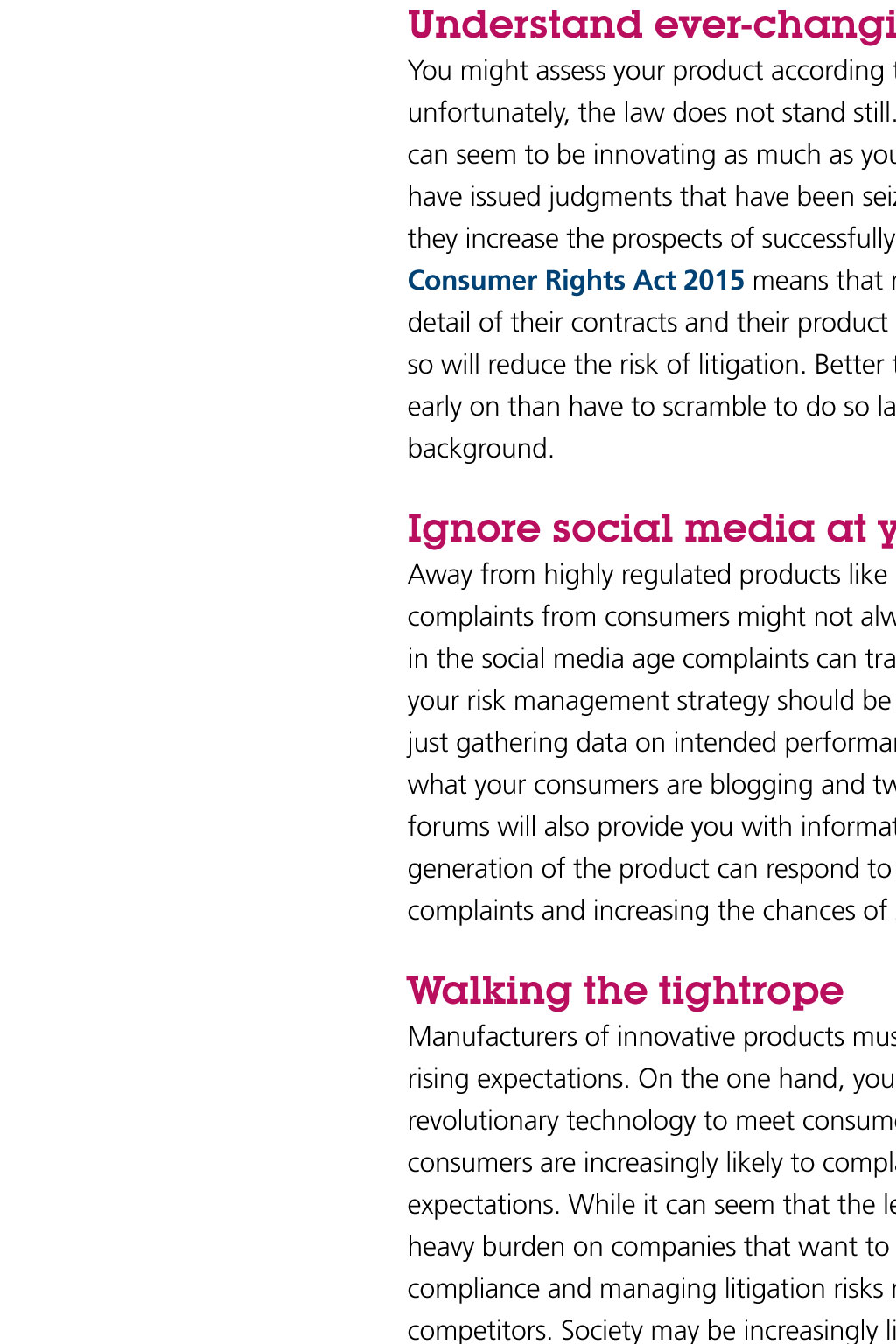
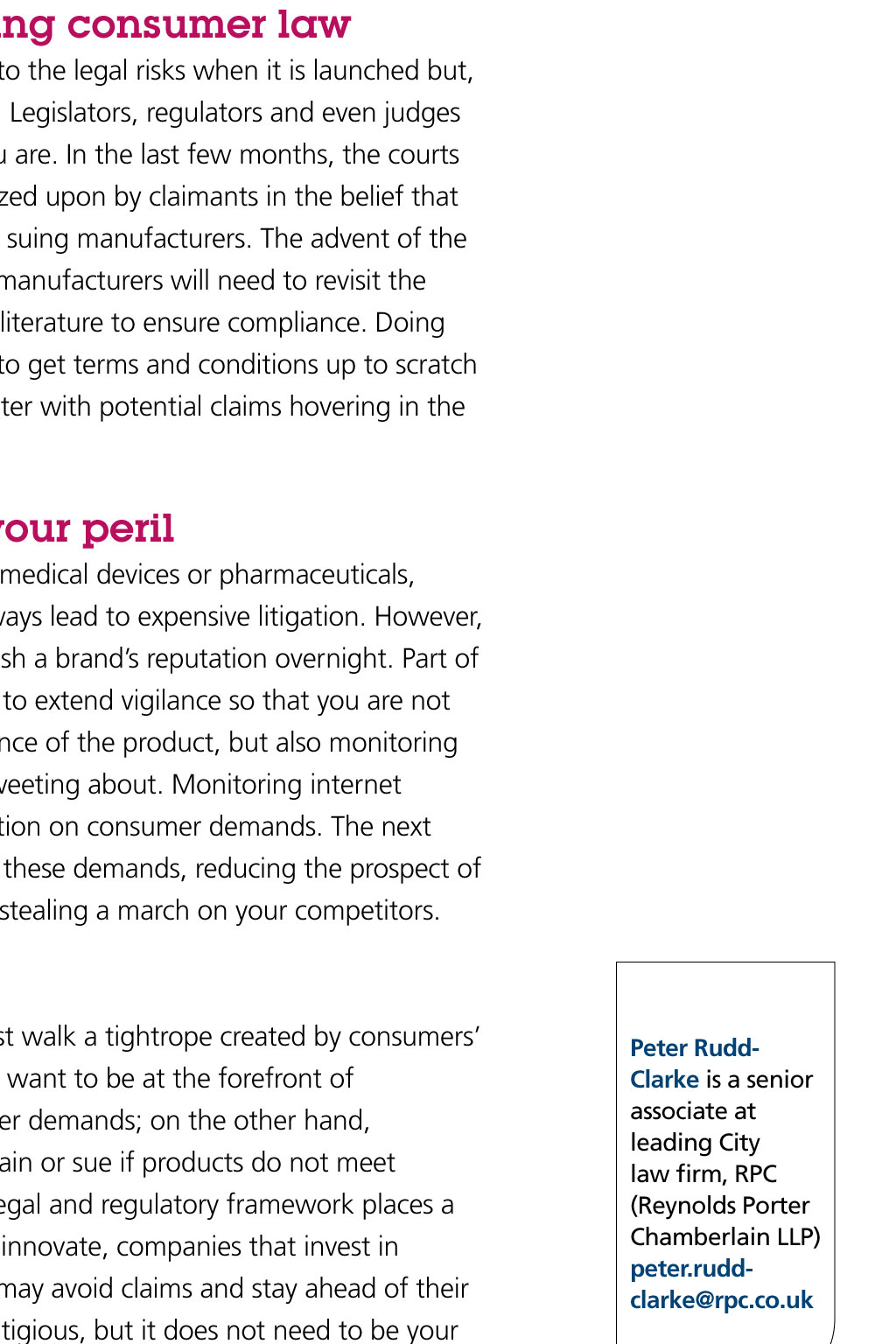












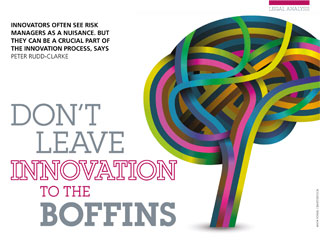
LegaL anaLysIs InnOvATORS OfTEn SEE RISk MAnAGERS AS A nUISAnCE. BUT THEy CAn BE A CRUCIAL PART Of THE InnOvATIOn PROCESS, SAyS PETER RUDD-CLARKE dOnT Leave AnitA ponne / shutterstocK TO The BOFFINs C ompliance and regulation can be seen as needless red tape for manufacturers with products to launch. However, risk management has the potential to add value and longevity to a product, pushing up profits. Manufacturers feeling burdened by compliance and regulation would therefore be well advised to change their mind-set. Let your competitors complain about compliance, regulations and an evermore litigious society while you switch the focus of risk management from being solely a damage-limitation exercise to anopportunity for growth. This attitude should be theguiding philosophy for the entire product development cycle from brainstorming the initial concept through to product development, marketing and post-market surveillance. the concept phase is not just for the boffins The seeds for a product that can be successfully defended from expensive litigation or regulatory investigation, or alternatively one that will be dogged with problems, are invariably sown at the concept phase. A brilliant new design should not leave the drawing board until the tyres have been well and truly kicked by your regulatory and compliance and legal departments. Stress-testing the design at this point has the potential to save money in the future; a product that can be defended robustly in the long-term will be around for longer and so generate more sales. Why do you need to stress-test the product? If your new design carries with it the risk of injuring users or damaging property, you face the risk of litigation in the future. Consumers could bring claims arguing that you were negligent in designing your product, that it falls short of the level of safety the public is entitled to expect, or that it was not of satisfactory quality and free from defects. Considering risk management even at this early stage will be important. Evidence of well-run trials can be relied on as a shield with which to defend any litigation that emerges. By contrast, if early testing of a product shows cause for concern, the reports prepared should highlight actions that will be taken to improve it. see regulation as an opportunity evidence of well-run trials can be relied on as a shield with which to defend any litigation that emerges in future For products in regulated sectors, such as medical devices, compliance with regulations should not be viewed as just an unhelpful brake on the main goal of bringing your offering to market, but as an opportunity to add greater credibility to your product. Early engagement with the regulatory regime increases the chances that your product will emerge in good shape. Take the life sciences sector as an example; for some categories of product, the UK regulator the Medicines and Healthcare products Regulatory Agency (MHRA) appoints notified bodies that review a manufacturers design and processes before verifying that a product qualifies for a CE mark and so can be marketed. Positive and open engagement with the notified body and MHRA could result in flaws in your design or processes being spotted at an early stage, when it is cheaper to put them right. If your approach to the regulators has been less constructive, flaws in the product may go undetected, with potentially damaging consequences. Manufacturers should consider doing more than the bare minimum when it comes to compliance. Regulators can be slow to catch up with scientific advances. Themore innovative a product, the less guidance there will be from regulators. Going beyond compliance to try to predict what regulators will eventually demand is essential in these circumstance, otherwise, you run the risk of falling foul of the regulators once they catch up. stay vigilant Manufacturers of products that do well in trials, and in the early phases after launch, should not rest on their laurels. An undetected defect could spring nasty surprises in the future. Take the example of the pain-relieving drug rofecoxib (Vioxx). The drug passed clinical trials and was approved for use in the US by the Food and Drug Administration (FDA). However, anecdotal evidence that the drug carried an increased risk of heart attack was the catalyst for withdrawal of the product and huge litigation. Eventually, the manufacturers field data was shown to tally with the anecdotal evidence. If the field data had been collected sooner, such large-scale litigation may have been avoided and the manufacturer could have redirected resources towards developing alternative products. Understand ever-changing consumer law You might assess your product according to the legal risks when it is launched but, unfortunately, the law does not stand still. Legislators, regulators and even judges can seem to be innovating as much as you are. Inthe last few months, the courts have issued judgments that have been seized upon by claimants in the belief that they increase the prospects of successfully suing manufacturers. The advent of the Consumer Rights Act 2015 means that manufacturers will need to revisit the detail of their contracts and their product literature to ensure compliance. Doing so will reduce the risk of litigation. Better to get terms and conditions up to scratch early on than have to scramble to do so later with potential claims hovering in the background. Ignore social media at your peril Away from highly regulated products like medical devices or pharmaceuticals, complaints from consumers might not always lead to expensive litigation. However, in the social media age complaints can trash a brands reputation overnight. Part of your risk management strategy should be to extend vigilance so that you are not just gathering data on intended performance of the product, but also monitoring what your consumers are blogging and tweeting about. Monitoring internet forums will also provide you with information on consumer demands. The next generation of the product can respond to these demands, reducing the prospect of complaints and increasing the chances of stealing a march on your competitors. Walking the tightrope Manufacturers of innovative products must walk a tightrope created by consumers rising expectations. On the one hand, you want to be at the forefront of revolutionary technology to meet consumer demands; on the other hand, consumers are increasingly likely to complain or sue if products do not meet expectations. While it can seem that the legal and regulatory framework places a heavy burden on companies that want to innovate, companies that invest in compliance and managing litigation risks may avoid claims and stay ahead of their competitors. Society may be increasingly litigious, but it does not need to be your company that falls victim to this trend. Peter RuddClarke is a senior associate at leading City law firm, RPC (Reynolds Porter Chamberlain LLP) peter.ruddclarke@rpc.co.uk